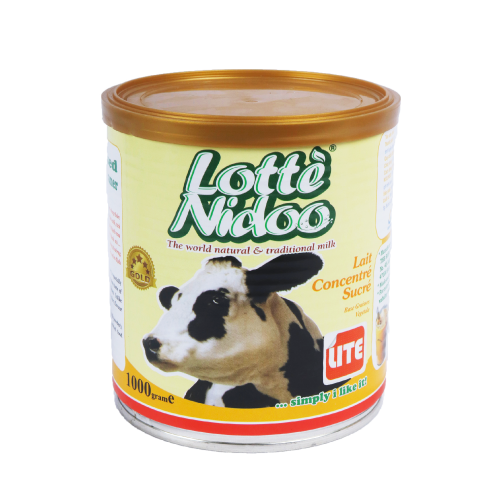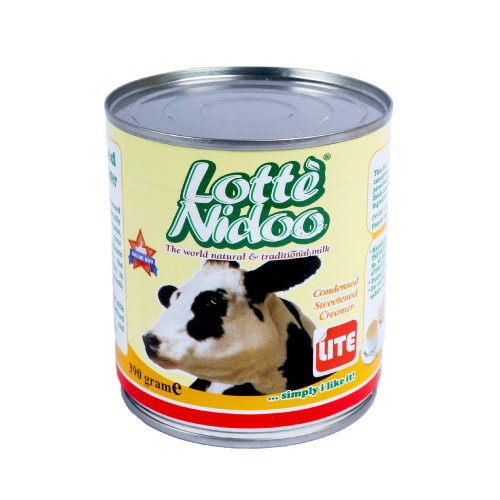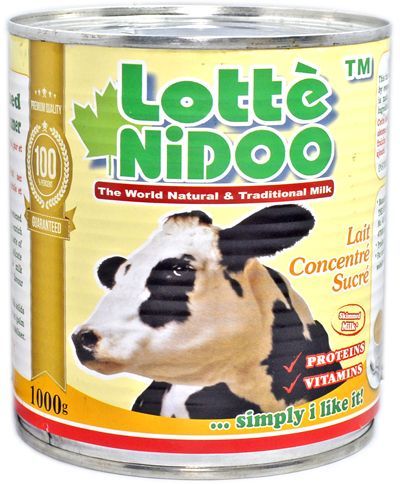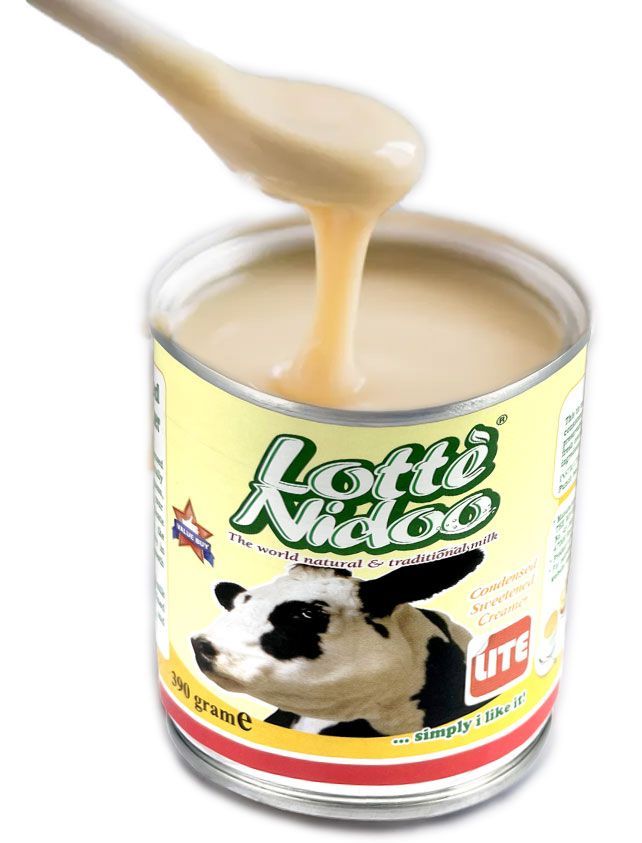Like no others, LottèNidoo** Sweetened Condensed Milk is produced in much healthier, creamier & nutritious as of today standard.
| Comparison | LottèNidoo | Brand X | Brand Y |
|---|---|---|---|
| Cow Fat | < 9.0 % | < 1.0% | < 1.0% |
| Palm Olein Fat | - | 10% | 11% |
| Protein | 5% | 1.8% | < 1.0% |
| Sucrose | 48% | 55% | 65% |
| Minerals | Yes | - | - |
| Vitamin A & D | Yes | - | - |
*Ingredients contain sugar, milk powder (sweet whey powder , skimmed milk powder & butter milk powder), permitted food conditioners.
** LottèNidoo Gold label Sweetened Condensed Milk
What you need to know about Sweetened Condensed Milk in 2 minute?
By the late 19th century, full cream sweetened condensed milk was being massively commercialised produced in Europe. It became a popular ingredient in recipes and a staple in households due to its long shelf life and versatility.
Throughout the 20th century, full cream sweetened condensed milk became a common ingredient in desserts, confections, and coffee / tea, around the world. Its usage spread across various cuisines, from Latin American "dulce de leche" to Asian desserts like "Thai tea", "Vietnamese coffee", "Kopi manisan susu" & "Teh ice".
Today, sweetened condensed milk is produced by numerous companies worldwide and is available in a variety of formulations, including sweetened condensed filled milk and sweetened condensed creamer. It remains a beloved ingredient for its rich flavor and ease of use in both home cooking and commercial food production. Yet, the original full cream sweetened condensed milk crucial ingredients of whole milk powder have been substituted into sweet whey powder & vegetable fat.
In recent years, sweetened condensed creamer has seen a resurgence in popularity, driven by its lower in cost & renewed interest in traditional recipes and global cuisines. It continues to be a pantry staple, valued for its versatility in both sweet and savory dishes.









